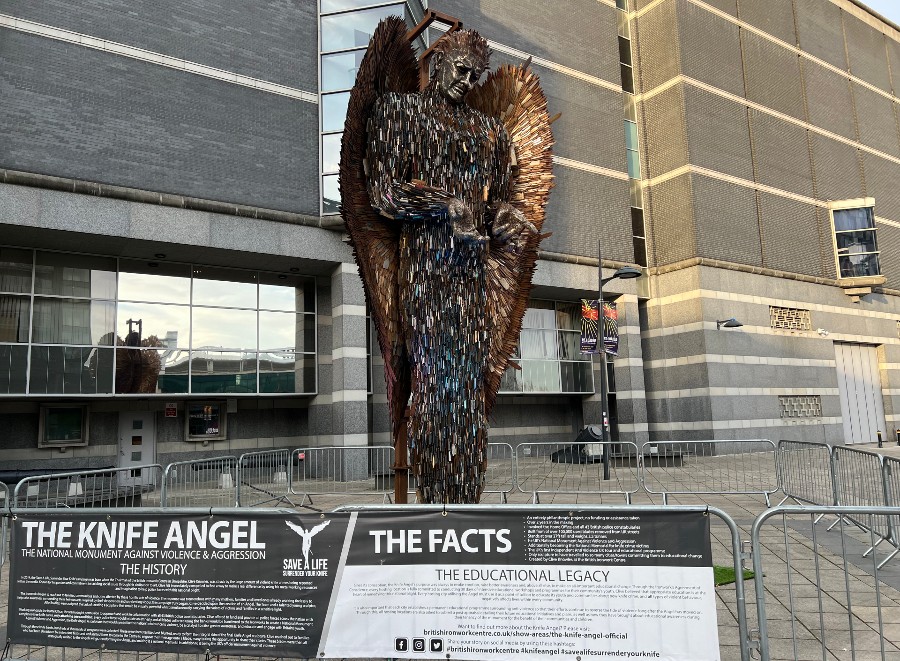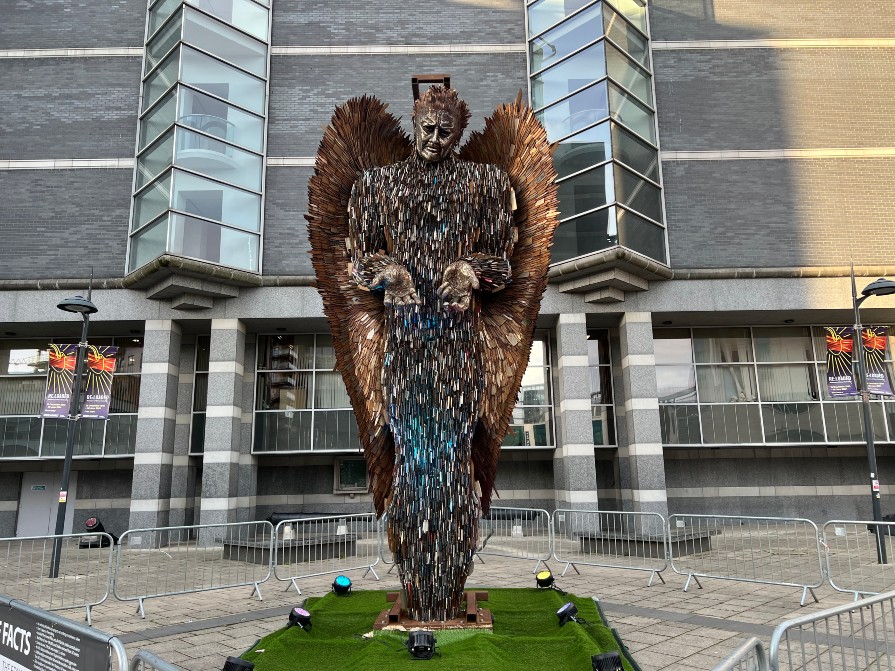The Knife Angel statue is currently on display outside of the Royal Armouries in Leeds.
Knife crime is a serious public health concern that affects communities across the U.K. with tragic consequences for those involved. Knife crime increased by 73% in 2022/23 compared with 2012/13, with a constant increase throughout the years (except during the Covid-19 pandemic, primarily due to social distancing measures).
Although some areas of the country face increased rates, the phenomenon has spread quickly through every city. In
West Yorkshire and Leeds, more than 10,000 knife crime-related arrests have been made by police in the last five years, with staff at Leeds hospitals sharing concerns about the recent number of injuries from these crimes.
The Knife Angel statue is a symbol that draws attention to this serious criminal offence. The 27ft tall structure was born from the ‘Save a Life, Surrender your Knife’ campaign, initiated by the Chairman of the British Ironwork Centre in Shropshire, Clive Knowles, and finally sculptured by Alfie Bradley. The piece is constructed from over 100,000 used blades removed from the streets of England. The statue is transported to a new city every thirty days, bringing
intensive educational workshops and programmes for the community’s youth for the hosting town.

The mission of the statue is to highlight the negative effects of violent behaviour whilst becoming a catalyst to raise greater awareness. The piece effectively delivers this, but its impact reaches beyond its original ethos. Once you approach the Knife Angel you are met with this feeling of awe because of its sheer magnitude. Each of the 100,000 knives is carefully placed to mimic an angel’s wings, with both hands open to welcome you with its message. The solemn expression of the statue is complete with a hint of sorrow, that leaves onlookers with a profound feeling of sadness. The striking image of the piece successfully delivers what art should – a deep seated emotional impact that shifts the viewer’s perspective to the original topic. In this case, it draws your attention to the prevalence of knife crime in England and the need for change.
The process of creation of the statue also represents the effectiveness of collaboration between police and communities. The British Ironwork Centre in Shropshire approached the Home Office to request the placement of knife banks in all police constabularies in the nation. Each police force organised knife amnesties and surrenders in the region, with each community taking ownership and being involved in the process. In the end, 250,000 knives were removed from British Streets. The result is a powerful memorial for the victims and families that have suffered from this phenomenon.

According to a study by Anglia Ruskin University, the reasons behind heightened knife crime include street violence, gang attacks and exposure, family issues and robbery. It is important to note that 11–20-year-olds are both the most vulnerable group of victims and perpetrators of the crime. The study concludes that safety measures like workshops and group discussion among young people can have reductive effects on the rates of youth violence. Thus, the Knife Angel is key in spreading awareness for the youth of Britain alongside the workshops brought to each hosting city.
The Knife Angel sculpture will reside outside the Royal Armouries Museum in Leeds until the 29th of February.
If you wish to report information on a knife crime anonymously, please visit here.
Photography by Igor Ventura.


